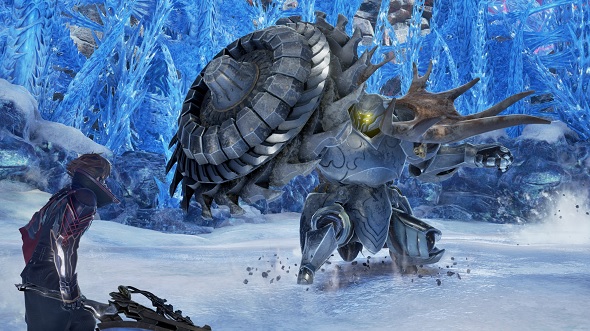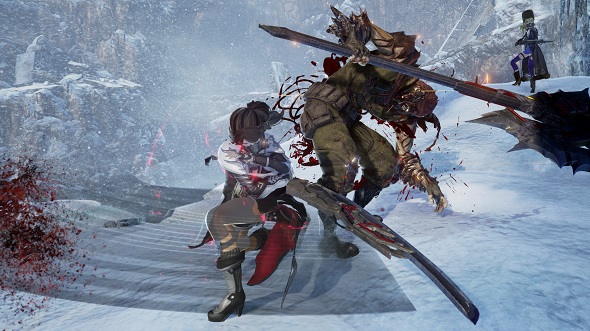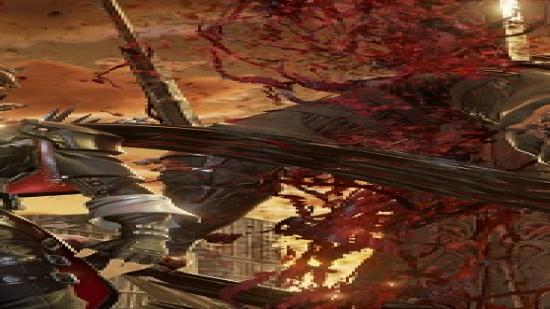Following the lead of Team Ninja with samurai slasher Nioh, Bandai Namco are having a pop at developing their own Souls-like with Code Vein. It is to be a post-apocalyptic RPG in which anime vampires roam the land in search of blood. While the studio initially played up to the Dark Souls comparison (complete with a ‘Prepare to Dine’ tagline), this action-RPG shares more of its DNA with FromSoftware’s own gothic Souls-like Bloodborne, rather than the slow-paced actual Souls series. All clear? Good.
Want another Souls-like to battle through? The Surge is certainly worth a go as our review attests.
Code Vein borrows liberally from the latter series’ playbook, however, with ‘Mistles’ replacing bonfires, an identical stamina system, and the total loss of all XP when you die. But playing Code Vein like a Souls outing will get you nowhere. There are no shields to hide behind, for one thing, so dodging or parrying enemy attacks is your only way to survive. Bandai Namco do not go as far as pilfering Bloodborne’s excellent Rally system – which lets you restore lost health by hitting an enemy immediately after taking damage – but Code Vein’s Drain Attack does reward you for constantly being on the offensive.

The Drain Attack is linked to Ichor – Code Vein’s resource for casting spells or ‘Gifts’. Rather than each spell having a certain number of charges, as is sometimes the case in RPGs, each Gift has a specific Ichor cost. Basic spells like Magic Missile cost one Ichor while powerful buffs like movement speed increases can cost ten Ichor. Your base Ichor count is ten, meaning you are limited in what spells you can cast when you start exploring.
While you can replenish your Ichor using items, you can also increase your overall count to 20 by landing fully-charged Drain Attacks. Each successful Drain Attack increases your Ichor count by two, meaning there is a real incentive to play offensively and go for parries. If you are on a roll, your character can easily snowball, giving you a constant stream of Ichor so you can keep casting Gifts. When combining all of this with the Focus gauge, which rewards well-timed dodges with an attack speed boost, you will have all the encouragement you need to always be pushing forward.
Another aspect that separates Code Vein’s combat from Bloodborne’s is its partner system. Rather than summoning another character to aid you for a limited time and only in a certain area, in Code Vein you are never without a NPC partner. For the demo, my partner was a gunner named Mia, who proved invaluable for aggroing enemy mobs from a distance.

Even more handy is the fact that both you and your partner can revive each other by casting a specific Gift, sacrificing part of your health bar. While this means you have licence to be reckless and go for extra damage during battles, you are at risk of your partner getting overwhelmed, meaning they can’t cast their Gift in time to save you. You are also at the whim of your partner’s AI – in my experience, they have a tendency to suddenly start attacking when you want them to stay back. I lost against the boss of the demo too many times thanks to my so-called partner going all Leeroy Jenkins instead of reviving me.
Whether or not the dark anime aesthetic works for you, Code Vein is shaping up to be a decent stand in for Bloodborne on PC – a hole that has needed filling for a couple of years now.
More footage of the game will be shown at Japan’s Jump Festa exposition later this month, which takes place December 16 and 17.
